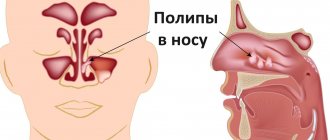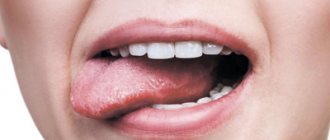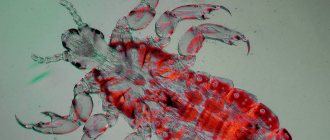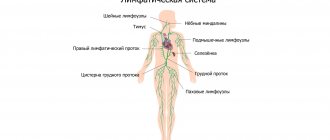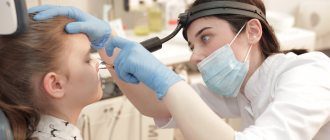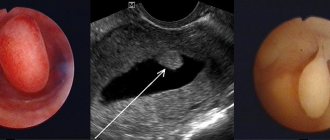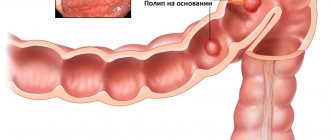Nasal polyps are a pathology that affects 4% of the population of all countries of the world. The disease is found in people with impaired immune system function who suffer from allergic reactions; it is more often diagnosed in men, less often in women. Removal of nasal polyps is carried out using surgical operations, in some cases treatment is carried out using drug therapy. The Yusupov Hospital includes several clinics, including an oncology department. The diagnostic center of the oncology department is equipped with high-tech equipment, modern computers, and positron emission tomographs. In the diagnostic center of the oncology clinic, patients undergo examinations if a benign or malignant tumor is suspected. Patients with suspected degeneration of a polyp into a malignant tumor are referred for research to the oncology clinic of the hospital.
What are nasal polyps
These are benign formations from the mucous membrane that gradually grow, making nasal breathing difficult. They form both in the nasal cavity and in the paranasal sinuses. Upon closer examination, they look like outgrowths in the form of peas or a bunch of grapes of a grayish-pearl color. Can be either single or multiple. Depending on the location, there are choanal polyps, which close the entrance to the nasopharynx from the side of the nasal cavity, and polyps located directly in the nasal cavity and paranasal sinuses. Basically, polyps grow from cells of the ethmoidal labyrinth, which are located in the upper parts of the nasal cavity.
Polypous rhinosinusitis (PRS) is a fairly common disease. According to world literature, its prevalence in the population ranges from 1 to 4%; according to European data (EPOS), it affects from 1 to 6% of the population. In Russia, according to some authors, up to 5 million people suffer from PRS and there is a tendency for the number of detected cases to increase annually.
The main reasons for the formation of polyps
The development of the polyposis process occurs with concomitant diseases:
- Bronchial asthma. This disease has an “aspirin triad of symptoms”: PRS
- bronchial asthma
- intolerance to non-steroidal anti-inflammatory drugs.
Causes
Polyps of the maxillary sinuses are the most frequently detected formations. These are benign neoplasms of the mucous membrane in the form of processes on thin stalks or a wide base. They grow from infected tissues against the background of inflammatory processes, and are combined with the sinus mucosa by connecting elements.
Polyps in the maxillary sinus (nasal polyps)
Main causes:
- frequent infectious diseases without treatment
- chronic inflammation of the maxillary sinus
- hereditary metabolic disorder, immune system malfunction
- sinus damage, presence of foreign bodies after dental treatment
- inflammation of the tooth root at the border with the sinus
- predisposition to allergies
Stages of development of the polyposis process
Stage | Stage I | Stage II | Stage III |
| Size | Covers only the upper part of the nasal septum. | Closes the common nasal passage to the lower border of the middle turbinate. | Covers the entire space. |
| Complaints and signs | The patient is concerned about a decrease in sense of smell or loss of it. Polyps do not interfere with breathing and are discovered by chance. | Polyps are visible during endoscopy or rhinoscopy. The patient is concerned about slight difficulty breathing through the nose and mucous discharge from the nose. | The patient stops breathing normally, vasoconstrictor drops do not help him, and a nasal sound develops. |
Features of treatment in children
Polyps are more common in adults than in children. But in childhood, as with any chronic pathology, doctors show a minimum of radicalism in relation to treatment; surgical treatment takes a back seat. And if surgical intervention is still required, it will be minimally invasive. If the child is under 15 years old and polypotomy is indicated for him, it will be gentle - with a laser, radio waves, endoscope or shaver, without opening the paranasal sinuses.
Children are treated conservatively; treatment, in addition to the prescription of local and general medications, includes rinsing the nasal cavity using the displacement method. During the rinsing process, allergens and bacteria from the nasal cavity and paranasal sinuses are washed away, and inflammation is reduced.
Conservative treatment of nasal polyposis
The first place in conservative treatment is occupied by hormonal drugs: local - topical steroids, and systemic.
Systemic hormonal drugs are used mainly in patients with moderate to severe bronchial asthma. They reduce the intensity and frequency of asthma symptoms, and also counteract the growth of polyposis tissue. Conservative treatment includes mast cell membrane stabilizers and antihistamines. If the polyposis is of an allergic nature or if we are talking about a purulent polyposis process, then antibacterial medications are used. In the case of a fungal process, antifungal agents are prescribed. Conservative treatment methods are indicated for patients with initial and second stages of polyposis or if there are contraindications to surgical treatment. In addition, after surgery, in order to prevent relapse, it is necessary to conduct periodic courses of conservative therapy.
When the disease occurs in children, conservative treatment takes precedence over other methods.
Potential Risks
“Polypous tissue is initially non-cancerous. This is not an oncological pathology, but a benign formation. But at the same time, everything that will be removed in the operating department will be sent for histological examination, so that the doctor studying the biomaterial can give a clear answer to the question of what it is,” noted Vladimir Zaitsev. In addition, it will tell you how fast the growth rate is. This is the main thing. This indicator also determines what the effect of the operation will be, for example, whether the polyps will grow again. “It happens to one person that they removed them and the polyps grew back literally six months later. He may attribute this to a poorly performed operation, but in fact the problem is precisely the growth rate. And for some, after one operation they may not grow back. Everything is very individual,” says Vladimir Zaitsev.
Surgical treatment of polyposis
Polypotomy is an operation to remove polyps, which can be supplemented by surgery on the paranasal sinuses, depending on the indications.
The volume of intervention depends on the localization and extent of the process. If polyposis develops only in the nasal cavity, polypotomy is sufficient. But if the localization is also in the paranasal sinuses, then in such cases we are talking about extended surgical intervention - it is necessary to remove polyps from the paranasal sinuses, which increases the volume of the operation. Such a surgical intervention will be called polysinsotomy together with polypotomy. During the operation, the surgeon, under the control of an endoscope , will:
- removal of polyps;
- expansion of the anastomosis of the paranasal sinuses;
- deleting content;
- opening the cells of the ethmoid labyrinth.
Contraindications to polyp removal
- pregnancy;
- severe general somatic condition of the patient;
- risks of bleeding leading to heavy blood loss (coagulopathy).
Consequences
When removing polyps, a person needs to listen to the opinion of a doctor. “Sometimes polyps are so small that the operation will not be noticeable, there is no point in fighting them like that. But when the polyps are very large and do not allow the nose to breathe, this provokes a rise in blood pressure, hypertension, cerebrovascular accidents, neurological conditions and diseases. Of course, in this case it makes sense to have surgery, because it is fraught with heart attacks, strokes, arterial hypertension and hypertensive crises,” says Vladimir Zaitsev.
Polyp removal methods
Removal of a polyp with a loop
The operation is performed under local anesthesia. The main tool is a metal Lange loop, adjustable in width. First, local anesthesia is given, then a loop is put on the polyp and cut off at the base of the stalk.
A significant drawback of the operation is that the polyp is not completely removed, which creates a high probability of relapse. Also, during this operation, bleeding is possible, and the surgical intervention itself is not painless: when the doctor inserts a loop into the nasal cavity and puts it on the polyp, the loop touches the other walls and septum of the nose. This may be quite sensitive for the patient, despite the effect of local anesthesia.
However, surgery with a Lange loop also has advantages. It can be performed under local anesthesia, the operation is inexpensive for both the patient and the clinic - hence the prevalence of this method in public health care structures.
Radio wave method for removing nasal polyps
This method of surgical intervention is close to removal with a Lange loop. But, despite the similarity of the methods, radio wave removal of polyps in the nasal cavity has a greater advantage: at the moment of cutting the polyp, the radio wave immediately coagulates the polypous tissue and reduces the risk of bleeding to zero. Also, the advantages of this operation include the ability to perform it on an outpatient basis and avoid the installation of nasal tampons in the nasal cavity after the operation.
The disadvantage of removing polyps with radio waves is the risk of relapse - the polyp is also cut off at the base. Radio wave polypotomy involves the removal of only large and medium-sized polyps.
Laser removal
Laser polypotomy involves surgery under endoscope control. The operation is performed on an outpatient basis and, most often, under local anesthesia. This is the optimal method for removing polyps in children.
Under the control of an endoscope, a laser knife is brought to the place where it is necessary to remove the polyp. Then, under the influence of a heating beam, it evaporates and decreases in size.
The advantages of this method are speed, efficiency and accuracy of execution. Laser polypotomy has a minimum of contraindications and is available to almost everyone.
Difficulties may arise if there are many polyps and they vary in shape and size. In this case, it will be difficult to remove them all. Another disadvantage is that the effect of laser polypotomy is limited to the nasal cavity. That is, if the formations are located in the paranasal sinuses, they are not removed with this method.
All methods are performed without interventions on the paranasal sinuses and their anastomoses, but can be supplemented with endoscopic polysinusotomy.
Removal of nasal polyps using a shaver (endoscopic method)
The endoscopic method is the latest technology. Endoscopy is performed under general anesthesia and, in addition to thoroughly removing polyps, makes it possible to open all the cells and sinuses of the nose from where they grow, prolonging remission for years. Before the operation, the patient undergoes a computed tomography scan in order to accurately determine the localization of the process. Careful removal of polypous tissue from the paranasal sinuses using the endoscopic method, supplemented by polysinusotomy, is a significant advantage over other methods. It allows you to extend the period of remission for years or even for life.
During endoscopy, shaver polypotomy is used. A shaver or in other words a microdebrider is a tool that has a cutting and suction function. When removed, it cuts the polyp tissue and sucks it in at the same time. This operation is much faster, since there is no need to evacuate the removed tissue from the nasal cavity. Shaver polypotomy allows you to remove the source of polyp formation. The endoscopic method is the least traumatic for the patient and the most convenient for the surgeon.
Comparative characteristics of methods for removing nasal polyps
| Removal of a polyp with a loop | Radio wave method | Laser removal method | Endoscopic removal method | |
| What is used | Metal Lange loop | Surgitron device (with a radio wave polyp loop or knife attachment) Video endoscope | Laser radiation Video endoscope | Microdebrider (instrument with a blade at the end) Video endoscope |
| Anesthesia | Local anesthesia | children under 7 years of age - general anesthesia; children from 7 years of age and older - local anesthesia; if the process is widespread, it can be performed under general anesthesia. | children under 7 years of age - general anesthesia; children from 7 years of age and older - local anesthesia; if the process is widespread, it can be performed under general anesthesia. | children under 7 years of age - general anesthesia; children from 7 years of age and older - local anesthesia; if the process is widespread, it can be performed under general anesthesia; for interventions on the paranasal sinuses, only under general anesthesia. |
| Advantages | Common and affordable | No bleeding, the ability to perform surgery on an outpatient basis | High speed, minimal contraindications | Removal of the focus of polyp growth, prolongation of remission, high speed of execution. |
| Flaws | The likelihood of relapse, bleeding and discomfort. | Probability of relapse, removal of only large and medium-sized polyps | If there are many polyps and they differ in size, removal will be difficult. It is carried out only in the nasal cavity. | No |
Risk group
There is a certain risk group for developing nasal polyps. “These are people who work in unfavorable enterprises with a certain harmfulness. We are talking about dusty rooms, closed, with poor ventilation. And if a person breathes such air for years, then his risks increase,” says Vladimir Zaitsev. And, of course, those at risk are those who have a hereditary predisposition.
Soppy story. How to rinse your nose without mistakes Read more
Local anesthesia
In children over 7 years of age and adults, polypotomy can be performed under local anesthesia. Before the operation, the child is given a sedative intramuscularly. An anesthetic solution (10% lidocaine solution) and vasoconstrictor drugs are sprayed or applied into the nasal cavity to relieve swelling from the mucous membrane and improve vision. Afterwards, a less concentrated anesthetic solution (2% lidocaine or ultracaine) is injected into the mucous membrane of the nasal cavity to enhance the analgesic effect. During the operation, the patient is conscious and perceives everything around him. Local anesthesia is indicated only in the case of surgical interventions limited to the nasal cavity - polypotomy.
General anesthesia (anesthesia)
In children under 7 years of age, polypotomy is performed under general anesthesia, so the intervention takes place without pain and, which is especially important for the child, without psychological stress. The clinic uses drugs of a high safety class, they are non-toxic and do not cause complications, so anesthesia is easily tolerated even in childhood and feels similar to normal sleep. Endoscopic polysinusotomy (FESS) and polypotomy, in case of a large volume of intervention, are also performed under anesthesia in children and adults. The type of anesthesia is selected by the operating physician together with the anesthesiologist according to indications.
Selection of removal method and anesthesia
The choice of polyp removal method depends on the indications and contraindications. Before surgery is scheduled, the patient undergoes an examination and undergoes a computed tomography scan. Next, the doctor carefully examines the location of the process. If it is limited to the nasal cavity and the cells of the ethmoid labyrinth, polypotomy is prescribed under local anesthesia, along with hormonal drugs necessary for remission. If the process is in all paranasal sinuses, a polysinusotomy is performed under general anesthesia.
If there are contraindications to anesthesia, the scope of the operation is reduced. Surgical intervention will be aimed only at removing polyps from the nasal cavity and improving nasal breathing.
Contraindications may be:
- pregnancy;
- severe chronic (congenital or acquired) somatic diseases.
The decision to perform an operation under anesthesia is made after a thorough examination of the patient together with the therapist and anesthesiologist.
The operation time is related to the extent of the process. If this is a single polyp, then under local anesthesia the operation will take no more than 15 minutes, and if the polypous process is localized not only in the nasal cavity, but also in the paranasal sinuses, the duration of the operation can be one hour or more.
Our clinic uses the best methods of surgical interventions for nasal polyposis and polyposis rhinosinusitis:
- radio wave polypotomy
- laser polypotomy
- endoscopic shaver polypotomy (using a microdebrider), if necessary, supplemented by interventions on the paranasal sinuses and their anastomoses (polysinusotomy, FESS-functional endoscopic sinus surgery).
The clinic employs otorhinolaryngologists who are proficient in all surgical techniques. The volume of surgical intervention and the method of anesthesia are selected by the doctor after examining and thoroughly examining the patient.
Rehabilitation after polypotomy
The postoperative period depends on the extent of surgical intervention performed on the patient. If a polysinusotomy was performed, the patient's nasal cavity is tamponed to avoid postoperative nosebleeds. In the case of endoscopic shaver or laser polypotomy without opening the sinuses, tampons are not needed.
Rehabilitation takes up to one week for any type of intervention.
With minimally invasive interventions, this period is reduced to 2-3 days, until the reactive postoperative swelling of the mucous membrane subsides. After surgery, it is recommended to limit physical activity for 2-3 weeks.
After surgery, topical steroids are prescribed to prevent the regrowth of polypous tissue. Patients with polypous rhinosinusitis should undergo a course of topical steroids several times a year.
How is recovery going?
Rest assured that we will not keep you at the Center unnecessarily
No hospitalization
Even in advanced cases with complex localization of polyps, the operation takes no more than 2-4 hours. Waking up after medicated sleep is not accompanied by deterioration of the condition and pain. The use of low-traumatic treatment protocols and the accumulated experience of doctors allow us to perform the operation as carefully as possible in relation to you. Hospitalization with an overnight stay at the clinic is not required .
For elderly patients with chronic cardiovascular diseases, a postoperative recovery service is provided in a day hospital for several hours under the supervision of an anesthesiologist. In any case, you will spend the night at home, in a familiar environment.
Inpatient recovery is necessary if general anesthesia was used, which often leads to complications, weakness and exacerbation of chronic pathologies. If a patient is offered a hospital stay for several days, this means that the clinic does not have modern equipment and qualified surgeons, or they are “squeezing” money out of you.
Branded rehabilitation on the day of treatment
The author's accelerated rehabilitation program ensures complete elimination of unpleasant consequences in the form of swelling, hematomas, muscle spasms, and pain.
Medicines to take home
After the operation, you will receive a free set of necessary medications to avoid purchasing counterfeit products. You don't have to run around pharmacies looking for the right medication in your postoperative condition.
The package with medications contains instructions with recommendations in the postoperative period. Please follow them to avoid complications.
Complications due to untimely treatment of polyps
Firstly, complications are possible with bronchial asthma. If polyposis actively develops and polyps grow, attacks of bronchial asthma become more frequent and are much more difficult to tolerate. Secondly, this is a violation of nasal breathing, which has a bad effect on the entire body. Lack of oxygen leads to the development of chronic diseases. In this case, a person will quickly develop problems with the heart and lungs. Also, lack of oxygen leads to chronic fatigue and developmental delays (if the patient is a child).
Polyps contribute to chronic inflammation in the nasal cavity, rapid penetration of infection into the lower respiratory tract, and even a common cold can cause complications for a person with polyposis.
Very rarely, polyps can transform into malignant tumors. But in addition, there are diseases, such as inverted papilloma or other neoplasms of the paranasal sinuses, the symptoms of which pass under the guise of a polyposis process, carrying a significant threat.
It is recommended to consult a doctor and start treatment in the early stages of polypous rhinosinusitis, which will avoid complications and be cured without surgery.
Diagnosis of polyps in the maxillary sinuses
During the examination, the main thing is to carry out a differentiated diagnosis to exclude other ENT diseases accompanied by similar symptoms
Upon visual examination, an increase in regional lymph nodes and swelling of the tissues in the area of the maxillary sinuses are observed.
X-ray examination in our Center is performed
on a computed tomograph in ENT mode .
Allows you to assess in detail the condition of the paranasal sinuses, determine the location and size of polyps. In difficult or controversial situations, the following may additionally be required:
- Videoendoscopy for examination of the nasopharynx and nasal cavity
- MRI to detect purulent fluid in the nasal appendages
- Bacteriological culture
Prevention of polyposis process
The best prevention is timely consultation with a doctor and comprehensive treatment of diseases that contribute to the possible appearance of polyps. If a person experiences the slightest disturbance in nasal breathing, this should be a signal to action. Any disturbance in the structure of the nasal cavity and disruption of the air flow in it can contribute to the development of polypous rhinosinusitis. People with bronchial asthma should visit an ENT doctor at least once a year, undergo an endoscopic examination and, if necessary, have a computed tomography scan of the sinuses.
Symptoms
- congestion in one or both nostrils
- feeling of constriction in the nose and throat
- lack of smell perception
- pain in the facial area
- often pain and pressure are projected onto the orbit, ear canal
- runny nose with copious mucus, frequent sneezing
If polyps of the maxillary sinuses are not removed in a timely manner, the neoplasms slowly grow, causing:
- hearing loss
- voice change
- conjunctivitis
- nosebleeds
- chronic headaches
- softening of surrounding bone tissue
- deformation of adjacent anatomical structures
- infection of the teeth at the border with the sinuses
Polyps are dangerous due to the possibility of tumors blocking the respiratory tract, even leading to death from suffocation
Research to prepare for surgery
Before the actual surgical intervention, it is necessary to carry out a set of procedures to prepare the patient for the operation. This complex includes:
- Complete blood count (CBC/DIFF) with leukocyte formula/ESCBC/DIFF) with leukocyte formula/ESR;
- Blood type, Rh factor;
- Blood chemistry
Find out more
Seeing a doctor in a timely manner will help maintain your health.
Don't delay treatment, call right now. We work around the clock. tel. (24 hours a day)
